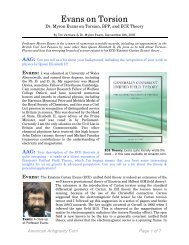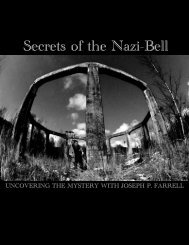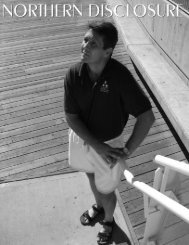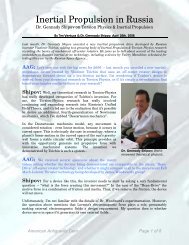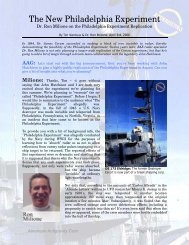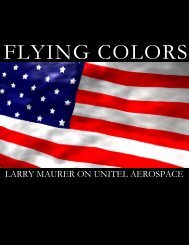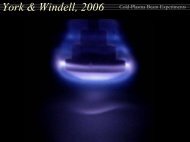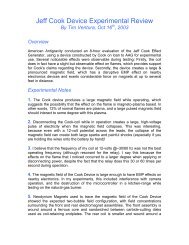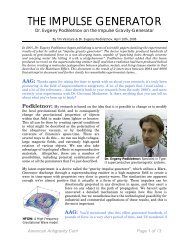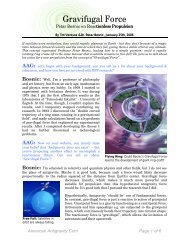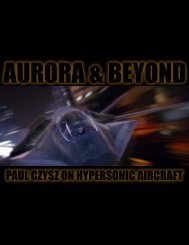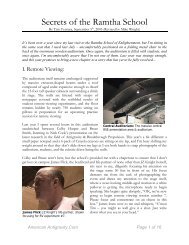The New Nazi Bell - American Antigravity
The New Nazi Bell - American Antigravity
The New Nazi Bell - American Antigravity
- No tags were found...
Create successful ePaper yourself
Turn your PDF publications into a flip-book with our unique Google optimized e-Paper software.
When William Moore wrote "<strong>The</strong> Philadelphia Experiment" book in 1979, he caught upwith an individual mentioned by Carlos Allende under the pseudonym of "Dr. FranklinReno". This Reno character was supposed to be a scientist on the PhiladelphiaExperiment during the war, which makessense -- again, Carlos Allende was a 1950'sera merchant-marine sailor with noeducation: there's no way he could haveeffectively talked about Einstein's UnifiedField <strong>The</strong>ory, which is complex enough thatit still confuses physicists today.<strong>The</strong> Eldridge: Power-cables from the Phil.experiment are still visible 50 years later.Moore found this "Franklin Reno"character hiding someplace like Arizona,still paranoid about the governmenttracking him down. Reno wasn't his realname -- so Moore called him "Dr. Rinehart"and then stated that this was just anotherpseudonym. <strong>The</strong> interesting part is thatDering actually knows Bill Moore prettywell, and claims that this was Moore'sinteresting way of hiding something in plain-sight. Rinehart wasn't a pseudonym; Moorehad used this person's real name in the book, which corresponds to records of a Dr.Rinehart working as a physicist specializing in Naval Degaussing Equipment in thePhiladelphia Navy Yard in 1943.That's also what Einstein was doing during the war -- working on "a device to explode atorpedo under a ship" at the Philadelphia Navy-Yard in 1943. Given his specialization &skills, and the fact that everybody else was working on Einstein's proposal (the nuclearbomb), it doesn't seem irrational to assume that Einstein was working on thePhiladelphia Experiment.Einstein's Unified Field <strong>The</strong>orySo what happened with both the <strong>Bell</strong> and the Philadelphia Experiment? Here we havetwo experiments based on similar principles, completely cutoff from each other due towartime secrecy...and yet they produce remarkably similar results. <strong>The</strong> key, I believe, isthat these are both true torsion fields, in that they bend the fabric of time-space into avariety of shapes.Dering suggests that folding space-time is a bit like origami: lots of shapes, and they havedifferent effects. Some of these effects can destabilize nuclei, creating radiation -- otherscreate a back EMF effect that can't be shielded. On a larger scale, these same effects cancreate <strong>Antigravity</strong>, jellification of metals, and things spontaneously disappearing fromour reality (like the Eldridge). Basically, Dering is describing a basis in physics for theHutchison-Effect.<strong>The</strong> chief complaint about Einstein's UFT is that "it was never finished", and that"Einstein wasn't happy with it". Very well -- however, it did work well enough that GE'sChief-Scientist Gabriel Kron used the UFT to derive solutions for issues like phase-creepin large, synchronous electrical systems. As it turns out, these torsion physics effects arearound us all the time, but they're usually so small that nobody notices them.<strong>American</strong> <strong>Antigravity</strong>.Com Page 5 of 6



